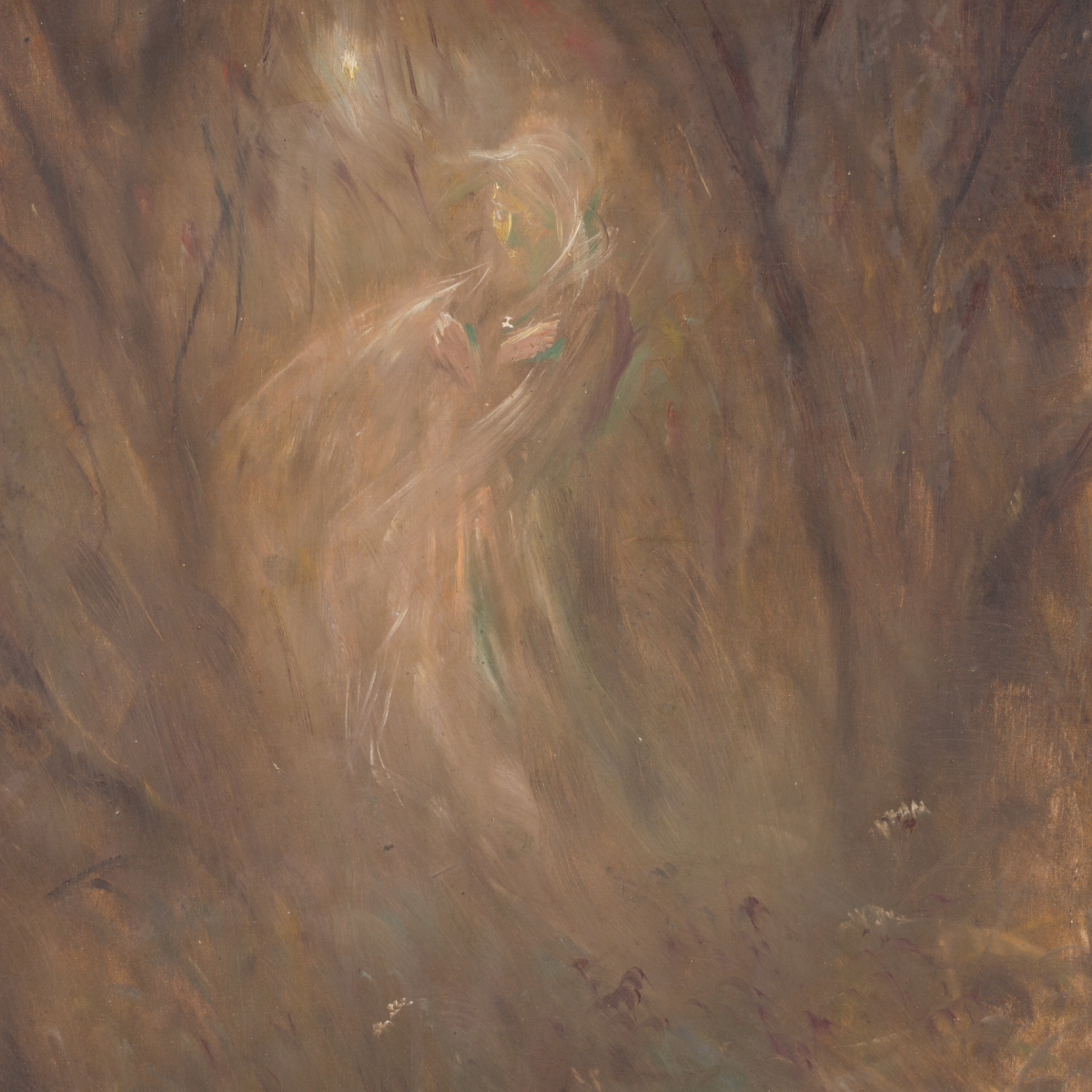I was looking back through past posts, and I believe the only Welsh ghost folklore we’ve delved into are the Cŵn Annwn, which are spectral dogs that also serve as death omens. Yet within Welsh ghostlore there are many different types of spectres. For example, there are tales involving the ghosts of departed mortals, the spirits of animals, shape-shifting ghosts, and death omens—just to name a few.
As is sometimes the case, I began researching and drafting for this month’s post, only to discover that I may have enthusiastically taken enough notes for two posts. So in order to keep the length reasonable, I shall make this a two-part series. This month we’ll look into the history of collecting ghost folklore in Wales to give us some background into the topic (including an account of a spirit sighting from the 1700s). Then next month, we’ll explore a specific type of Welsh haunting and learn about its characteristics through a written ghostlore account.
Early Accounts Collected by the English Gentry
In The Folklore of Wales: Ghosts, Delyth Badder and Mark Norman explain that the “… earliest written accounts of Welsh hauntings were predominantly collected by the English gentry— ….” The ghostly events they documented were helpful with respect to better understanding Welsh folklore, but it seems that their interpretations were not really representative of “… Welsh lower classes and their customs, ….” This was likely because they wouldn’t have been a part of the social traditions in rural Wales where families and friends gathered to tell stories and folktales around the hearth during a Noson Lawen (Merry Evening) or a Noson Weu (Knitting Night).
Ghostlore Gathered by Clergymen
As time passed and folklore studies became a more recognized discipline, “later collections from the nineteenth to the early twentieth centuries, … show a shift in the importance of obtaining accounts from the lower classes, ….” Badder and Norman describe the authors of some of these later collections as clergymen scholars. While these clergymen scholars did not always support the superstitious beliefs held by the members of their parish, they “… were able to provide more accurate and reflective accounts of the folklore of a particular region.”

Reverend Edmund Jones’ Collection of Apparition Sightings
There is a somewhat unique collection of folklore, which was gathered and written between the time of the early English gentry accounts and the later clergymen scholars. During the eighteenth century, the Reverend Edmund Jones traveled throughout Wales on horseback to preach and gather stories of ghost encounters. He collected these first-hand accounts into his book, A Relation of Apparitions of Spirits, in the Principality of Wales, which was published in 1780.
Badder and Norman point out that Jones’ work differs from the English gentry by including accounts from people of all social classes. But they also describe how he held an opposing view from the clergymen scholars in that he “… argued for the existence of ghosts as proof of the divine, ….”
His belief in ghosts surprised me, and I decided to search for Jones’ book. Upon locating it, I soon discovered a passage that explains his thinking and addresses his reasons for producing such a collection of spirit sightings. In the preface of his book, Reverend Edmund Jones writes:
But some may yet enquire what may be the end and design of amassing together accounts of this nature, and making them publick ? … In answer to this, I avow that it is designed to prevent a kind of Infidelity which seems to spread much in the Kingdom, especially among the Gentry and Nobility, even the denial of the being of Spirits, and Apparitions, which hath a tendency to irreligion and Atheism; for when men come to deny the being of Spirits, the next step is to deny the being of God who is a Spirit, and the Father of Spirits.1
While Reverend Jones’ perspective may not have been shared by the later clergymen scholars, his pursuit in gathering accounts of spirits and apparitions yielded an extensive collection of ghostly folklore. His book is organized by parish and county and offers a diverse look at Welsh ghostlore.
Wirt Sikes’ Viewpoint on Ghost Folklore
In 1880, one hundred years after Reverend Jones’ book was published, Wirt Sikes’ book, British Goblins: Welsh Folk-lore, Fairy Mythology, Legends and Traditions, became available. Sikes was an American, but at the time his book came out, he was serving as United States Consul for Wales. Badder and Norman warn that there are times when he has a tendency to enhance his tales (we’ll see a bit of this in next month’s post), but he does bring up some interesting points when introducing his section on the Welsh spirit world.
He was writing just after the Industrial Revolution and the rise of spiritualism, and he seemed to be trying to reconcile belief in ghosts with all of the advancements being made. He notes that the Welsh are not particularly more superstitious with respect to the spirit world than people in other countries. He also observes how similar the ghost tales from the previous century in Wales are to spiritualism accounts during his own time, and he points to “… the constant appearance, in American communities, of ghosts of the old-fashioned sort.” Additionally, he revisits Reverend Jones’ book and remarks on how not too far in the past (from his perspective), Reverend Jones was teaching that folks “… must not only believe in a spiritual existence, but must believe in that existence here below—must believe that ghosts walked, and meddled, and made disagreeable noises.” Keeping all of that in mind, Sikes is also curious about the following:
That this age is superstitious with regard to ghosts, is not wonderful ; all ages have been so ; the wonder is that this age should be so and yet be the possessor of a scientific record so extraordinary as its own. An age which has brought forth the magnetic telegraph, steamships and railway engines, sewing-machines, mowing-machines, gas-light, and innumerable discoveries and inventions of marvellous utility—not to allude to those of our own decade—should have no other use for ghostology than a scientific one.
Ghostlore is Still Prevalent Today
And though our current age has experienced further scientific advancement, ghostlore is still prevalent, and not necessarily as something to be studied scientifically. Growing up in San Diego, California, during the 1980s (one hundred years after Sikes’ book was published), I often walked past and went inside the Whaley House and the Hotel del Coronado, both of which were (and still are) considered haunted. People visit these sites (myself included) perhaps first drawn in by the history of the buildings and the accounts of the inexplicable, but also perhaps hoping to witness a sighting, enjoy the ghostly stories, or maybe gain perspective into the unknown.
A Spirit Sighting Account from the 1700s
I’d like to end with an account of an apparition sighting from A Relation of Apparitions of Spirits, in the Principality of Wales. Reverend Jones interviewed a “Mr. D. W. of Pembrokeshire,” who related an experience he had while traveling through a field “… where evil Spirits are said to haunt, ….”

Here is the account as written by Reverend Jones:
At another time between sun set and dark night, he could see the likeness of a man, but could not see his arms, and he was without a hat, at some distance from him, going round about him three or four times, and at the same distance from him. He spoke to it several times, what it wanted, &c. but had no answer, and as yet did not fear him. But said to himself, perhaps it is some body that wants the way ; and so turned out of the way to give way to it. And then a terror came upon him which increased as he went on, ( It is not good to give way to the devil, it makes him bolder, but to resist him courageously in the faith, 1 Pet. v. 8, 9. ) when he was got some distance from the place, and going up hill, he looked back towards the place of the Apparition, and he saw there a ball of fire. When he came to the house the people saw him look bad and discomposed, and asked him if he had been frightened ? He was ready to faint, tho’ a stout man. They gave him some cordial which kept him from fainting, and recover’d him from his trembling.2
At the end of the tale Jones explains that in his experience, seeing an apparition of an evil spirit can be a sign of trouble to the person who sees it. He alludes to further trouble that came upon Mr. D. W., but does not include details.
I hope you enjoyed this introduction into Welsh ghostlore. Next month, we’ll explore the characteristics of Welsh ghosts with unfinished business here in the mortal world.
Art credit (featured image): Forest Ghost by Ladislav Mednyánszky via web umenia, licensed under public domain




